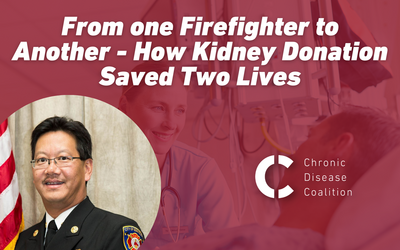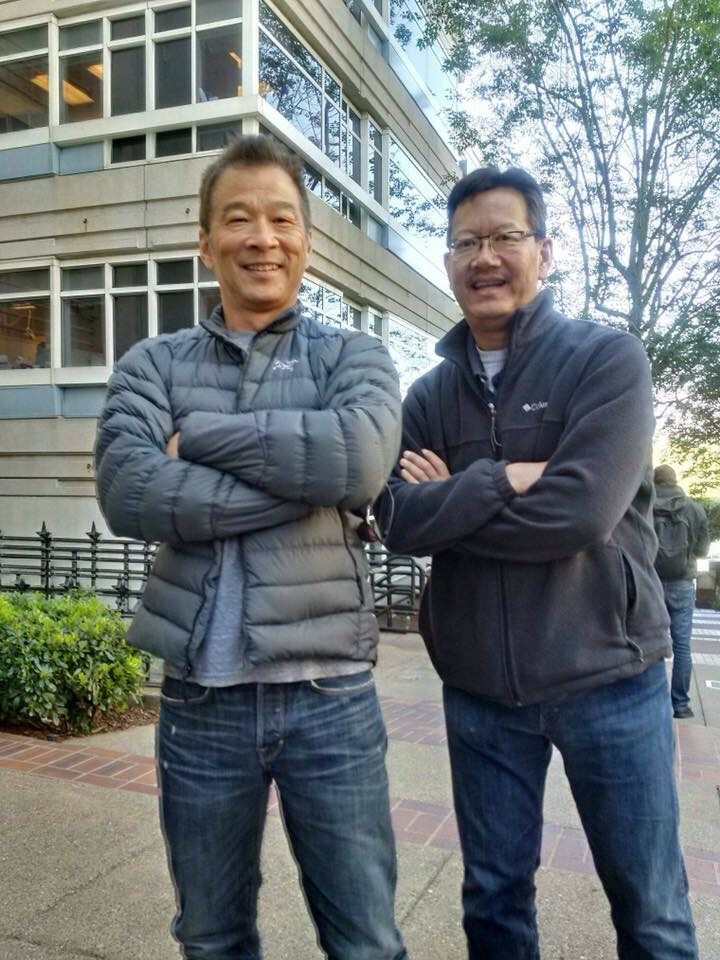
Gil Dong became a firefighter-paramedic in 1990, when he was 26-years-old. He had worked in every part of the department by 2013, when the City of Berkeley appointed him fire chief. He was the first Asian American fire chief in the continental U.S. and went on from Fire Chief to be Deputy City Manager before retiring. It was an impressive career, especially considering he was managing lupus at the same time.
Lupus is a chronic (long-term) disease that can cause inflammation and pain in any part of your body. It’s an autoimmune disease, which means that your immune system — the body system that usually fights infections — attacks healthy tissue including skin, joints, kidneys and heart. – Lupus Foundation of America
Gil’s lupus progressed to the point that his kidneys failed.
“I managed it well for a long time, but the combination of age and work stress really made the lupus go out of control,” he said. “My kidneys were failing, and I had to go on dialysis. I retired before starting dialysis. After 4 months of dialysis for 10 hours a day and 7 days a week, a donor was found.

After decades of community service, they turned to their family and friends for help—and another firefighter answered.
The National Kidney Foundation estimates that most people wait 3-5 years for a kidney, but that wait can be as long as 10 years, based on location, blood type and prior transplants, transfusions and pregnancies. And, if you can connect with a living donor, that wait time drops completely.
Cultural Challenges
Peter Yung, a retired Petaluma firefighter/paramedic, had been friends and a coworker with Gil since 1983. He was sure he’d be too old and too unhealthy to donate, but he wanted to show his willingness to support. He also knew that living donations are a lot harder to find in minority communities, so he put himself on the list of candidates.
Gil and Peter explained that some Asian families, especially those more recently arrived from China, have cultural prohibitions against organ donation because of a strong religious directive to keep the body whole. There can also be distrust of the Western health care system and a cultural reluctance to discuss death—all of which make kidney donation a little hard to conceive (more here).
According to the U.S. Department of Health and Human Services:
The number of organ transplants performed on Asian Americans in 2020 was only 24.7 percent of the number of Asians currently waiting for a transplant. The number of transplants performed on whites was 48.8 percent of the number currently waiting.
While 8.5 percent of the total candidates currently waiting for transplants are Asian, they comprised 3.1 percent of organ donors in 2020.
But as paramedics, both men had learned how to save lives with the help of donated cadavers. They were both comfortable with the idea of donation, and Peter was able to explain to uncertain family members that he was saving his friend’s life, and without a kidney, he could die.
Perhaps the biggest cultural challenge they faced was what Peter described as “firehouse culture” – too many years of unhealthy eating, sleeping and off-shift partying. But despite years of drinking, extensive health screenings showed that Peter’s health was good, and he and Gil were a match.
They underwent surgery at California Pacific Medical Center on April 4, 2018.
Four years later, they are both living full and robust lives. Gil came out of retirement and now works full time as a labor relations analyst. Peter resumed his hiking habit just six weeks after surgery and is filling his retirement years with global travel and love of photography.
The Need For Legal Living Donor Protections
The duo was lucky in another respect: as they were both retired at the time of the surgery, they did not risk losing their jobs for taking time off for transplant surgery and recovery. Kidney donors can also be denied health insurance coverage and have higher insurance premiums. A bipartisan federal bill has been introduced to provide these protections.
Living organ donation not only saves lives, but it also saves money. Each year, Medicare alone spends approximately $89,000 per dialysis patient and less than half, $35,000, for a transplant patient.—National Kidney Foundation
Peter is quick to shrug off appreciation for his donation.“I’m not a hero,” he said. “I did it for my friend, and it fell in my lap. The true heroes are the ones who do it blindly… Also, after I went through all the health screenings, I realized I had a real gift in my health, and I should protect it. I quit drinking and start eating healthier. So, Gil saved my life, too.”
Peter and Gil are sharing their story in support of National Kidney Month. For more information about becoming a kidney donor, visit https://www.kidney.org/transpl...
